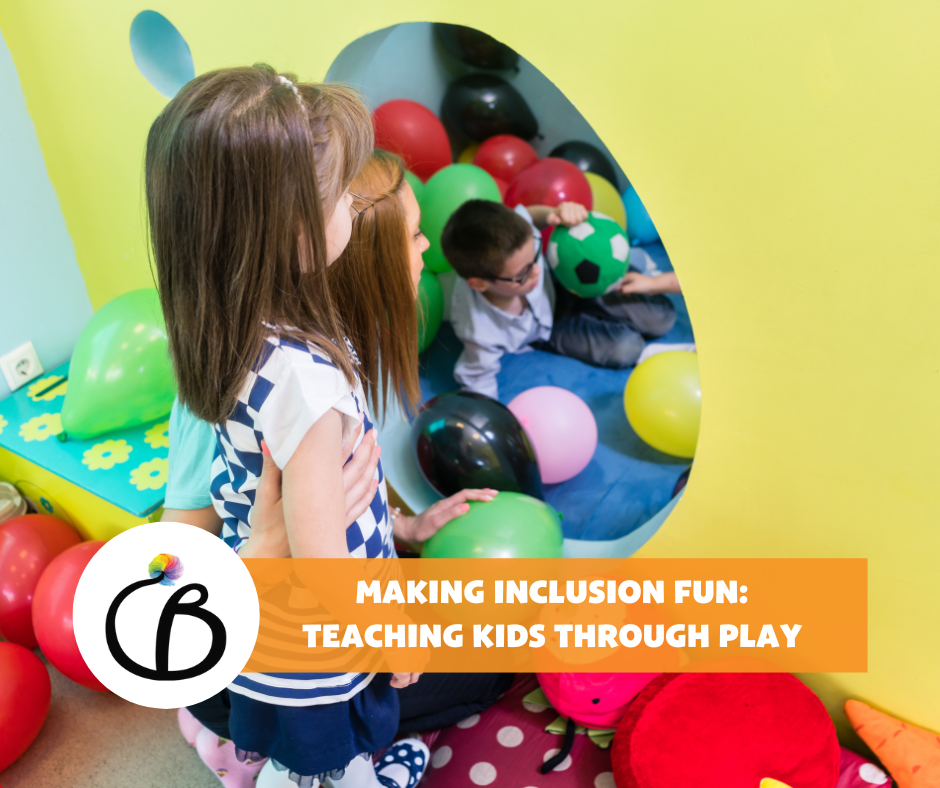In today’s fast-paced world, where screens and schedules often rule the day, it’s more crucial than ever to nurture qualities like inclusion, curiosity, kindness, and empathy in our children. I’ve seen firsthand how essential inclusion is, especially in raising my oldest son, Guion, who has Down syndrome. Misconceptions sometimes lead kids to look at Guion differently, which can be both hurtful and isolating. That’s why I believe teaching inclusion from a young age is vital.
But here’s the fantastic news: teaching inclusion doesn’t have to be a tedious task. In fact, it can be downright playful and fun! Playtime is a magical window where children can learn life’s most important lessons, and that includes the wonderful world of inclusion, diversity, and acceptance. So, let’s dive into why teaching inclusion through play is a brilliant idea and pick up some practical tips on how to do it.
Why Play is the Perfect Teacher
- Natural Learning: Kids are like sponges, soaking up knowledge as they play. It’s their natural way of exploring the world, and it’s in this context that they develop crucial social and emotional skills.
- Long-Lasting Impact: Lessons learned through play tend to stick with children. When we introduce inclusion in a fun and engaging manner, it becomes an integral part of their worldview.
- Positive Associations: Associating inclusion with enjoyable experiences helps children develop positive attitudes towards diversity and differences.
- Preventing Bias: Teaching inclusion at an early age can help counteract biases that may develop as children grow older.
7 Practical Tips for Teaching Inclusion through Play
- Use Diverse Toys: Bring in a variety of toys and materials that represent different cultures, abilities, and backgrounds. Dolls of various ethnicities or puzzles depicting people with different abilities can spark curiosity and discussions about diversity.
- Try Role Playing: Organize role-playing activities featuring diverse scenarios. This helps children develop empathy by experiencing life from someone else’s perspective.
- Employ Storytelling: Share stories that highlight inclusion and diversity. Choose children’s books with characters from various backgrounds and experiences, and then discuss the lessons with the kids.
- Play Collaborative Games: Encourage games that require cooperation and teamwork. Board games, group puzzles, and team-building activities can promote inclusion by emphasizing the importance of everyone’s contributions.
- Engage in Art Activities: Engage children in creative activities celebrating diversity. Let them create artwork reflecting their individuality or representing inclusivity.
- Community Involvement: Participate in community activities that promote inclusion, like volunteering at local organizations or attending cultural festivals. These experiences let children see the value of diversity firsthand.
- Open Communication: Foster an open and non-judgmental environment where kids feel comfortable asking questions about differences. Address their questions honestly and age-appropriately, encouraging curiosity and understanding.
Teaching inclusion through play is like planting seeds of kindness and acceptance that will grow as your children do. These lessons will shape the future, making it brighter, more colorful, and most importantly, more inclusive for all. So, let’s embrace the power of play and set our kids on a path towards a world where everyone belongs and is celebrated for who they are.
Join Curious B.E.I.N.G.s in building a more colorful, more inclusive world!
For more ideas of how to teach kids about inclusion, curiosity and compassion, follow Curious B.E.I.N.G.s on Facebook and Instagram and subscribe to the Curious B.E.I.N.G.s newsletter.




